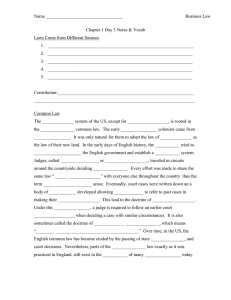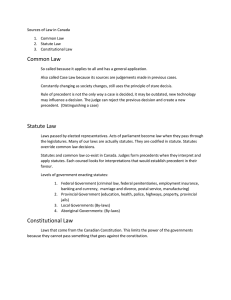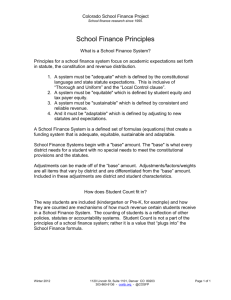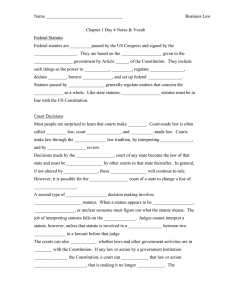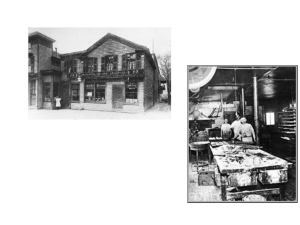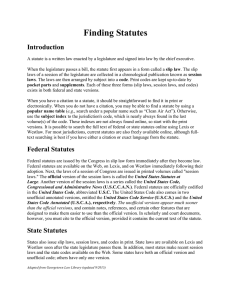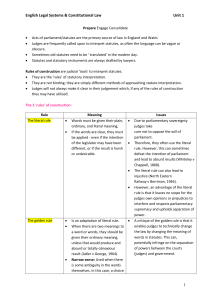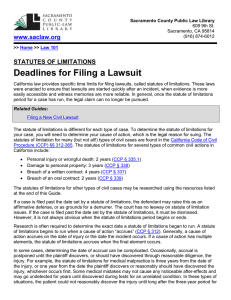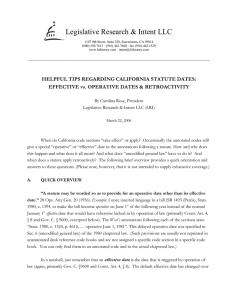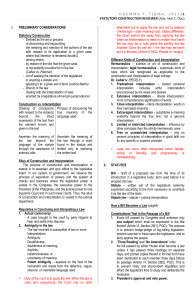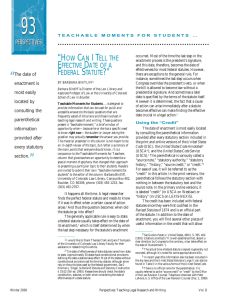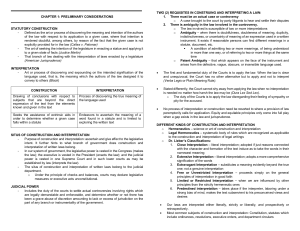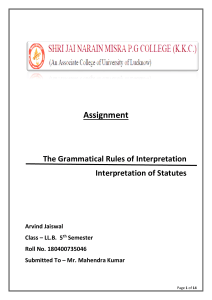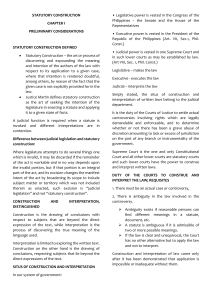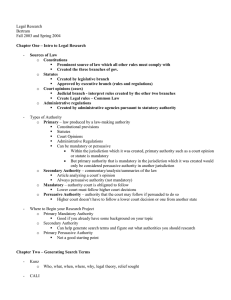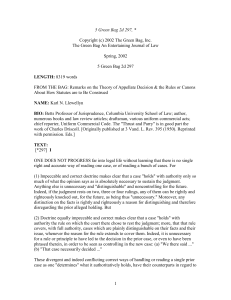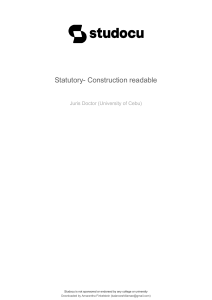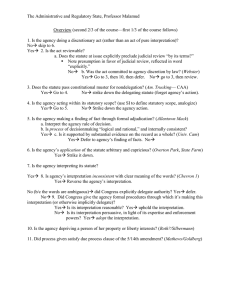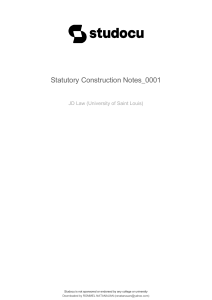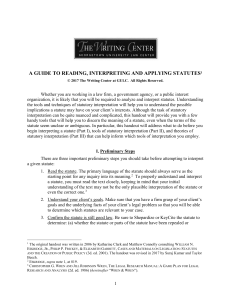Civil Procedure 1, Professor DiFonzo: Learning Objectives
advertisement
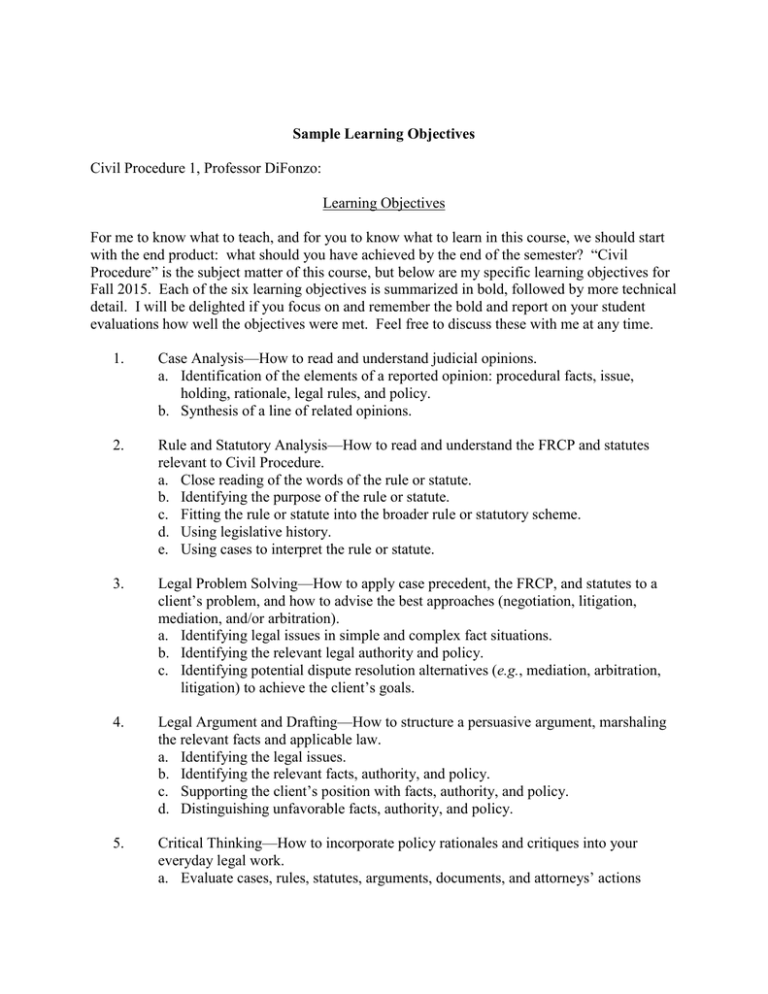
Sample Learning Objectives Civil Procedure 1, Professor DiFonzo: Learning Objectives For me to know what to teach, and for you to know what to learn in this course, we should start with the end product: what should you have achieved by the end of the semester? “Civil Procedure” is the subject matter of this course, but below are my specific learning objectives for Fall 2015. Each of the six learning objectives is summarized in bold, followed by more technical detail. I will be delighted if you focus on and remember the bold and report on your student evaluations how well the objectives were met. Feel free to discuss these with me at any time. 1. Case Analysis—How to read and understand judicial opinions. a. Identification of the elements of a reported opinion: procedural facts, issue, holding, rationale, legal rules, and policy. b. Synthesis of a line of related opinions. 2. Rule and Statutory Analysis—How to read and understand the FRCP and statutes relevant to Civil Procedure. a. Close reading of the words of the rule or statute. b. Identifying the purpose of the rule or statute. c. Fitting the rule or statute into the broader rule or statutory scheme. d. Using legislative history. e. Using cases to interpret the rule or statute. 3. Legal Problem Solving—How to apply case precedent, the FRCP, and statutes to a client’s problem, and how to advise the best approaches (negotiation, litigation, mediation, and/or arbitration). a. Identifying legal issues in simple and complex fact situations. b. Identifying the relevant legal authority and policy. c. Identifying potential dispute resolution alternatives (e.g., mediation, arbitration, litigation) to achieve the client’s goals. 4. Legal Argument and Drafting—How to structure a persuasive argument, marshaling the relevant facts and applicable law. a. Identifying the legal issues. b. Identifying the relevant facts, authority, and policy. c. Supporting the client’s position with facts, authority, and policy. d. Distinguishing unfavorable facts, authority, and policy. 5. Critical Thinking—How to incorporate policy rationales and critiques into your everyday legal work. a. Evaluate cases, rules, statutes, arguments, documents, and attorneys’ actions based on their effects on (1) clients, (2) the civil litigation system, and (3) society. b. Challenge assumptions made by judges, legislators, attorneys, students, professors, and themselves. 6. Lawyering Skills—How to learn the basic “how-to’s” of establishing a client relationship, obtaining facts, weighing legal alternatives, and attempting a negotiated resolution. * Students will experience basic lawyering skills, such as fact investigation, choice of forum, client counseling, and negotiation. Legal Analysis, Writing & Research, Professor Stein Learning Objectives. This is a two-semester course designed to assist you in learning: o various methods of legal reasoning; o how to analyze statutes, cases and other sources of law; o how to discern relevant facts and apply a legal principle to those facts; o how to write more clearly and succinctly; o how to prepare a variety of legal documents and to cite legal authorities correctly in those documents; o how to tailor your writing to a variety of audiences and for specific purposes; o how to improve your oral communications with clients, judges, and opposing o counsel; and o the process of legal research, including the various types of legal research materials and how to access them, both in print and electronically.
